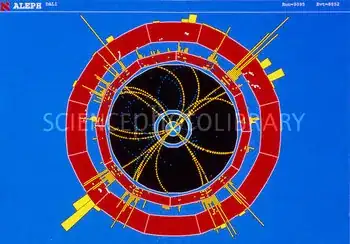First at all - if I understood right - the existence of antiquarks is hypothetical. If one not agree with this please refer to experimental data which shows their observation.
Everything we observe can be considered hypothetical for each of us. It is a hypothesis that you have a screen and are reading this. Maybe it is all a hypotheis in my mind , or your mind. Everything coming in from our senses is the real experimental data.
Fortunately we have managed to have a common data base and to start with defining experiment and the data. In classical physic this means measurements in thermometers, balances etc defined a set of data that could be modeled with classical thermodynamics, classical mechanics and classical electromagnetism. It is with mathematical formulae that we predict the orbits of satellites, and the model is validated because new measurements show that the satellite appears where we calculated. Nevertheless it should be clear that the numbers we measure and are fitted by the mathematical model are a type of "proxy" of what one might call "real" behind the numbers.
Second one has to show that the neutron is not able to decay in electron, neutron and anti-neutrino as well as in the anti-particles.
This decay makes no sense.
If one will use the isospin he has to go back in history and to explain how and why the isospin was discovered. Or was he invented?
Then we come to the quantum mechanical framework and special relativity, both extremely crucial in understanding and modeling nuclear physics processes. The models are extremely successful ( viz atomic bomb and nuclear reactors). Isotopic spin has been defined within nuclear physics where it was discovered that for many states whether a neutron or a proton was involved a symmetry could make predictions. The SU(2) symmetry of isospin organized nuclear reactions in a coherent model. Actually several models for calculation purposes but isospin is necessary for all. The concept of a baryon arose from this symmetry, since for the strong interaction , of which the nuclear force is an expression, protons and neutrons are interchangeble. Note that we are down one level in the proxies necessary to call a measurement a measurement, i.e. a validation of a model. More complicated detectors than thermometers and balances are necessary.
The data and the models fit so well that it is ridiculous to question whether isospin works or not or was invented.
Then we come to particle physics which has been studied extensively and is modeled correctly with the standard model, which is to all intents and purposes a shorthand description of innumerable measurements in particle physics.
Third a neutron-antineutron collision - after all what we have seen in this kind of collisions with protons-antiprotons
Proton antiprotons annihilate into pions mainly and this has been documented/measured so well that it only displays ignorance to question it.

please note the the pi letters are put in after the photograph of the reaction was taken
and electrons-positrons- has to lead to pure energy in the form of photons.
Even more wrong in the case of energetic electrons and positrons as in LEP

Did we get this data in some experiment?
yes we got these data from a lot of experiments and keep getting it and planning new experiments.
repeat of first question:
First at all - if I understood right - the existence of antiquarks is hypothetical. If one not agree with this please refer to experimental data which shows their observation.
Quarks antiquarks and gluons come from the level of measurements that is even more removed from thermometers and balances, complicated detectors that need thousands of physicists and engineers to construct and maintain and take data with. And they come because the hypothesis that they exist allows us to have a definitive model of how particle interactions work. We have particles as traces in the chambers, we have seen quarks and gluons as jets in the particles produced in the elementary interactions ( one more level in measurements). We say we have "seen quarks and antiquarks and gluons" because the model, SM, we use to interpret our measurements demands that they are there. The model fits the data up to now very well and has made successful prediction for new observations, the most recent one the discovery of the Higgs boson.

